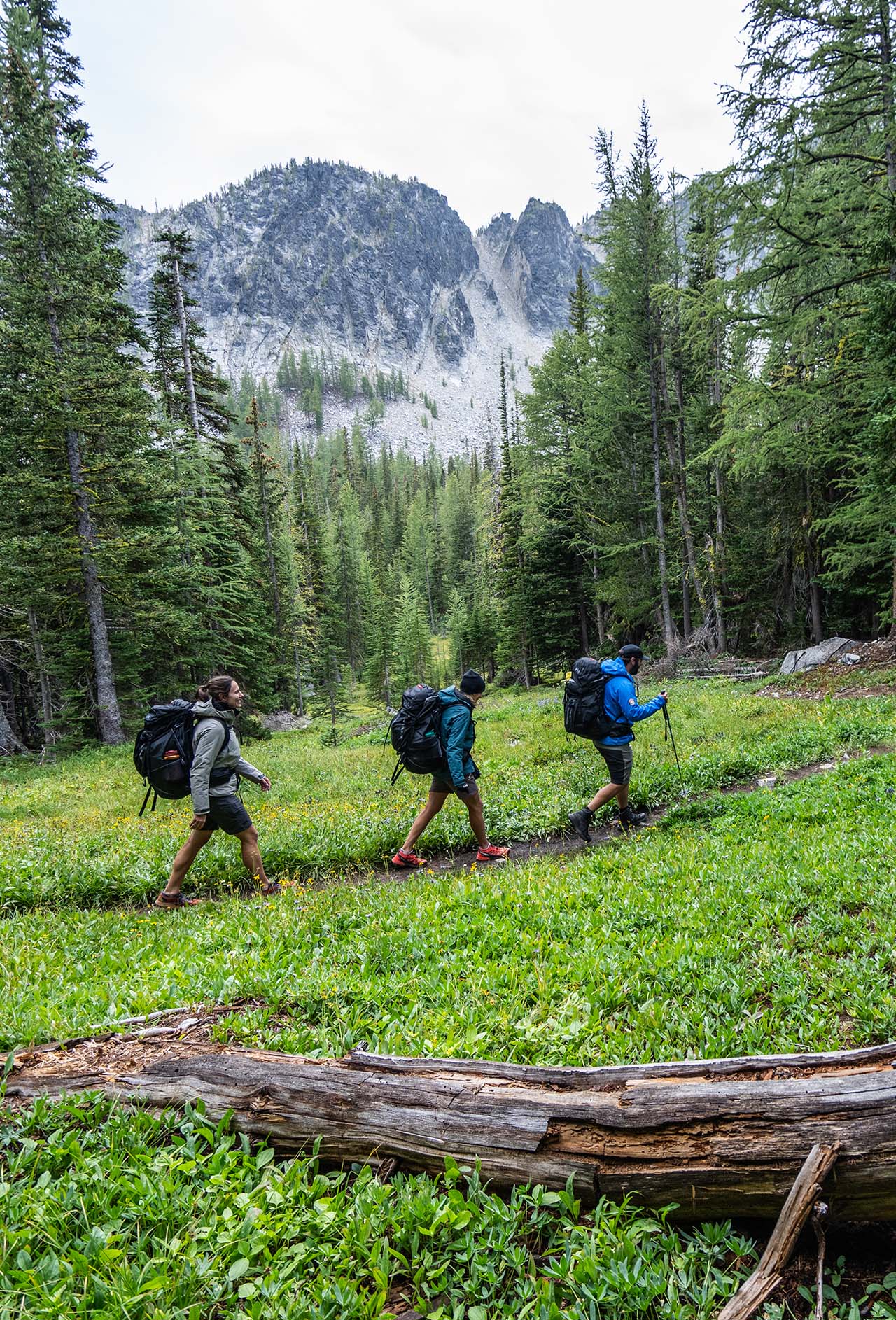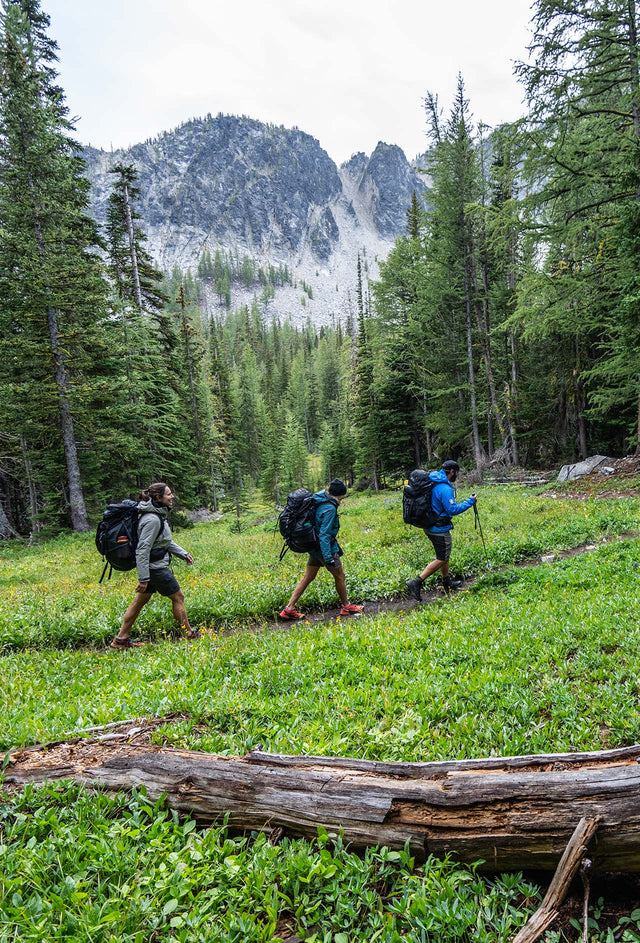April 01, 2022 | Update: Feb 20, 2024 | Nate Brown
PACKING LIST FOR A CLASSIC DAY HIKE
"Being comfortable and safe is a great foundation for soaking up all the wonderful sights that mother nature has to offer."
Day hiking is a staple for outdoor lovers and the most common method to explore the great outdoors. In this guide outdoor explorer, Nate Brown shares his top 8 essential items to pack when embarking on a day hike, whether it’s along the coast or up in the mountains.
8 THINGS TO PACK FOR A CLASSIC DAY HIKE
Despite day hiking not having such a "hardcore" reputation compared to other types of outdoor adventures, it's still important to pack the right gear. Every year we read about hikers who get lost, dehydrated or injured while out on the trail. With the right preparation, we can be better prepared to deal with unforeseen challenges.

1. BACKPACK
This may seem a bit assumed, but a good day starts with having a good pack. Here are the key features that I look for in a good backpack: easy access to water (side water bottle pocket or internal water bladder sleeve), hiking pole attachments, a hip belt to transfer weight from your shoulders and back, a rain cover.
NATE'S TOP BACKPACK TIP
A perfect volume for day hiking is a backpack in the 30-40 liter range. This size is small enough to be lightweight while still being able to store everything needed for a day spent outdoors.
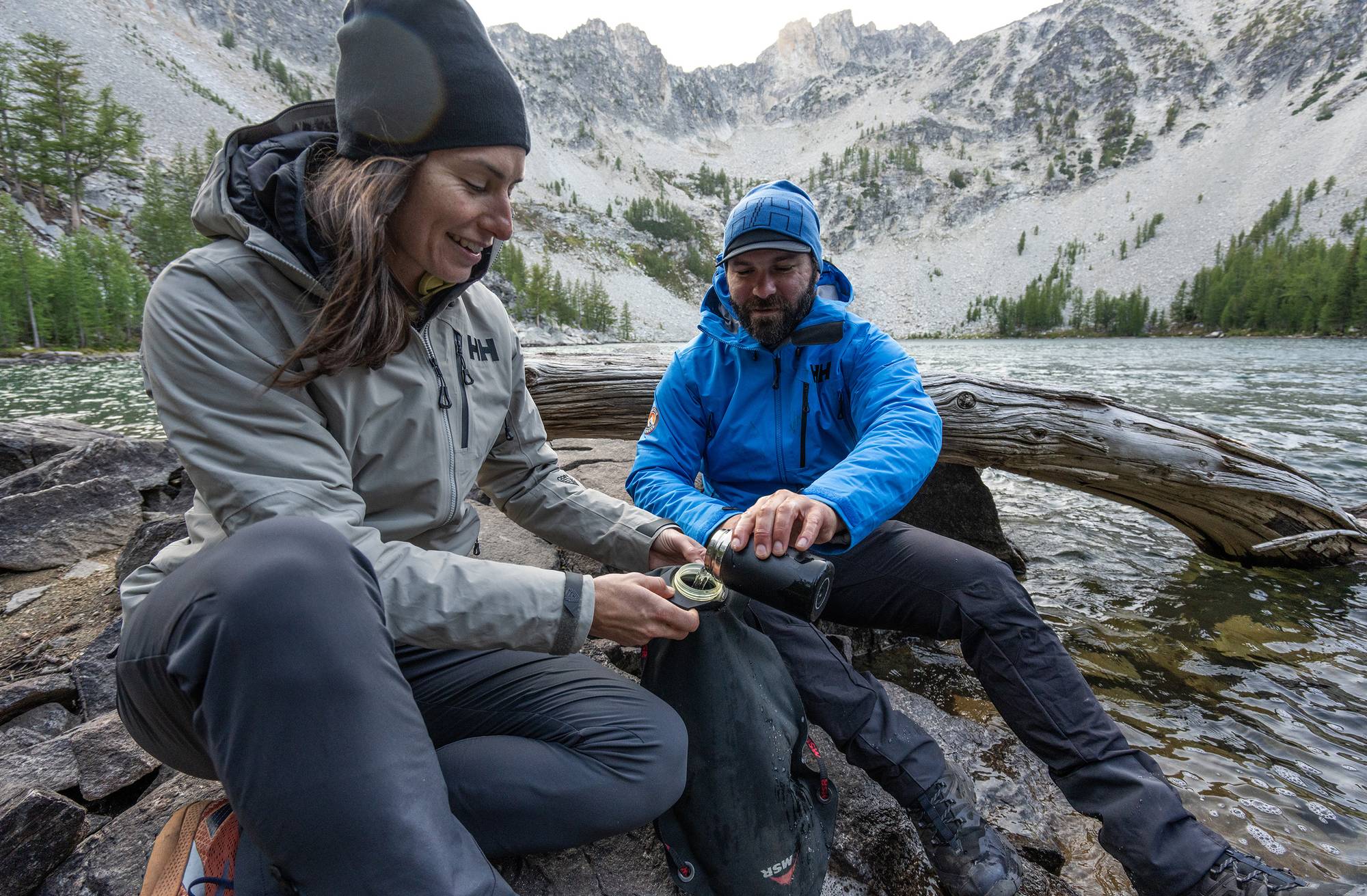
2. FOOD & WATER
Depending on the trail, I carry anywhere between 1-3 liters of water. And I always have a water filter, so if I run out (or want to sip some amazingly ice-cold glacial melt!) I'm able to get hold of more.
The amount of food can vary quite a bit. I take anything from the standard energy bars, to a sandwich, to a whole buffet picnic. I’ve been known to pack an entire pizza wrapped in foil, so this is an area I don’t skimp on!
But whatever I pack, I always bring more than I anticipate needing in case:
I’m out longer than I expected;
I run into someone else who needs more food;
I become hungrier than I thought I would be (this happens a lot!)
3. SUITABLE APPAREL
Nothing kills a good day hike like bad apparel choices. In spring and early summer, my apparel needs to adapt to the wide range of conditions. I can experience anything from super cold mornings, to hot sunny afternoons, to storms that quickly pass, and even patches of snow. Be prepared for unpredictable weather!
WARM AND PROTECTIVE PANTS
I prefer to wear pants for their warmth and protection from bushes, shrubs, bugs, and the sun. Other features I look for are “stretch & give” (for those times when you leap across a stream), and a hook at the bottom of the leg (to act as a gaiter if I encounter any snow).
BASE LAYER TOP
I prefer a lightweight moisture-wicking long sleeve shirt; something like the Lifa Active Solen Long Sleeve, which checks those boxes while also adding UPF 50+ sun protection!
Choose a baselayer > Men's | Women's
FOOTWEAR
My footwear tends to vary; I wear anything from a traditional hiking boot to something more like a trail runner. Typically, for day hikes, I choose something lightweight and comfortable.
Shop Trail & Hiking Footwear >
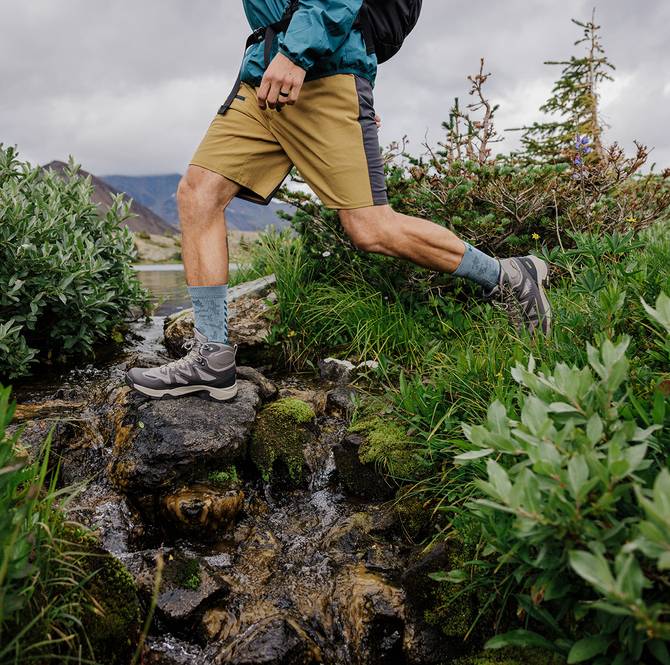
4. EMERGENCY GEAR
In addition to all the usual first aid stuff for cuts, bumps, and bruises, I've customised my first aid kit over time. And I try not to leave my gear "repair kit" behind either. Here's what I include in both:
CUSTOMISED FIRST-AID KIT*
Bug sting relief ointment. Allergy medication. Sodium/electrolyte tabs for cramps. Leukotape for blisters. Bivy sack (emergency heat blanket).
GEAR REPAIR KIT
Small knife. Multi-tool. Lighter. Cord. Patch kits. Duct tape.
*Make sure you check the expiration dates on the things you use because some first aid items do expire!
5. EXTRA LAYERS
Regardless of what the weather forecast says, I always carry additional clothing in my backpack.
This can vary from season to season, but in the spring and summer months, this consists of: a lightweight rain shell jacket (I especially love the Verglas Infinity Shell), lightweight rain shell pants (check out the Verglas Infinity Shell Pants), a midweight insulation layer (I look for Lifaloft because it's super warm without the bulk of a big puffy jacket).
ACCESSORIES
Accessories like a pair of gloves, neck gaiter and beanie are easily overlooked , but can make a big difference even in the warmer months.
Discover Accessories >
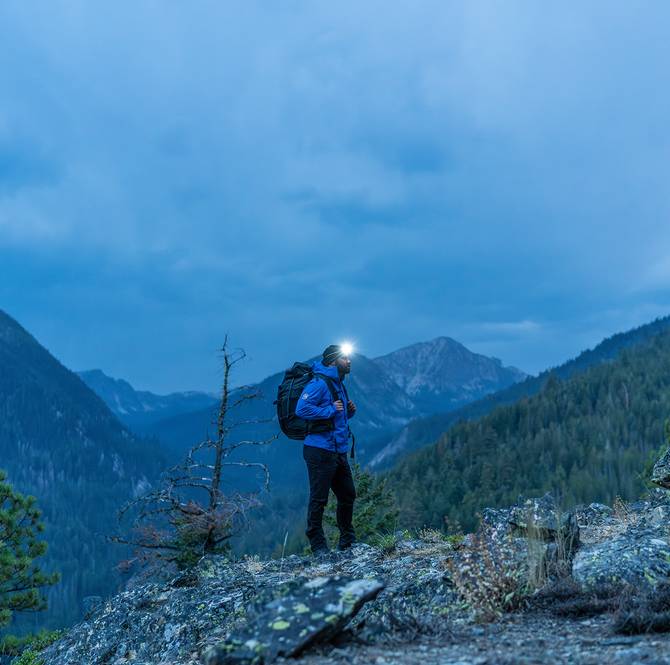
6. SATELLITE MESSENGER
I carry an emergency SOS beacon and satellite messenger with me on all hikes, called the Garmin InReach Mini. This little device sends out a digital breadcrumb every 30 minutes that marks where I’ve been. My loved ones back home can check my location in real-time. I can also send and receive text messages, and if something bad happens, I can even trigger an SOS that goes out to local first responders. I pay a small monthly service charge (like any other phone service), but the peace of mind it gives me and my loved ones is really important to me.
7. CAMERA (OPTIONAL, BUT AN ESSENTIAL FOR ME)
I don't mind carrying a heavier pack if it means getting some great photos. There are so many camera options out there. I recommend a camera with a crop sensor (instead of full-frame) and an 18–135mm lens.
NATE'S SET-UP
Sony A6400 with an 18–135mm zoom lens. It's small, lightweight and the lens can handle anything from wide-angle landscape shots to zoomed-in telephoto.
Peak Design Capture Clip. I love having easy access to my camera without needing to stop and dig it out of my pack; easy access means I’m able to take more photos, and I never miss a shot before it’s gone.
Editor's note: check out these top 5 tips for adventure photography by photographer, Michael Overbeck.
8. THE EXTRAS
Sunscreen, bug spray, and lip balm sometimes come with me on a day hike.
“#2” kit (toilet paper, trowel, and small hand sanitizer): a must if a restroom isn't going to be accessible.
Headlamp: for potentially low-light situations, in case I'm out later than expected.
Hiking poles: they transfer some of the weight on steep uphills to my upper body, and reduce impact when I go downhill as well.
Foam buttpad: really handy for sitting on, especially if the ground is wet or snowy.
Microspikes: great if there's any snow lingering on my route.
HAPPY HIKING!
With the right preparation and gear, we can be better prepared for unforeseen challenges and really enjoy the experience.
ABOUT NATE BROWN
Nate Brown is an alpine adventure photographer based out of Bellingham, Washington. He regularly climbs peaks across the Pacific Northweat and loves capturing the natural beauty of the alpine and the people who love to be there.
To learn more about what Nate does in the outdoors as a mountaineer, keep up with him in the following places:
@NATEBBROWN ON INSTAGRAM

